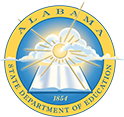DLCS18.1.1
Classify and sort information into logical order with and without a computer.
Classify and sort information into logical order with and without a computer.
Unpacked Content
UP:DLCS18.1.1
Vocabulary
- attribute
Knowledge
- how to identify attributes of items.
- that attributes are used for sorting.
Skills
- identify various attributes of items.
- sort items based on an identified attribute.
Understanding
- items can have attributes of varying types.
- attributes can be used to group items.
- attributes can be used to sort items and put into a specific order.
